Viet Nam News
By Le Huong & Hong Van
For those interested in ethnic groups’ culture and green space, Thai Hai Stilt House Preservation & Ecological Tourism Village is an ideal destination.
Located 70km north of Ha Noi and just a short drive from the centre of Thai Nguyen City, you will find homes in the air.
46842611PM.jpg) |
| They’re here: A local guide knocks on a bamboo pipe to announce villagers that tourists are visiting. |
The village has 30 original houses built on stilts. They are home to Tay and Nung ethnic groups and have been moved here from Dinh Hoa Safety Zone.
Many of the properties are more than half a century old.
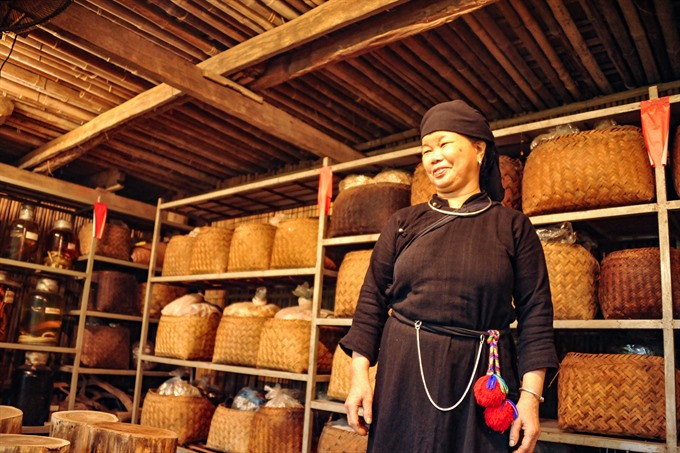 |
| Herbal medic: The village’s herbal doctor, who cares health for villagers. VNS Photos Nguyen Minh Hieu |
More than 100 families of Tay, Nung, Cao Lan, San Chi and Kinh groups are encouraged to settle at the village to turn the old deserted hilly land called Bo Tien into today’s fertile green areas. Many families have four generations living here.
But it is not just the houses that are worth a visit. Even the walk from the car park is spectacular.
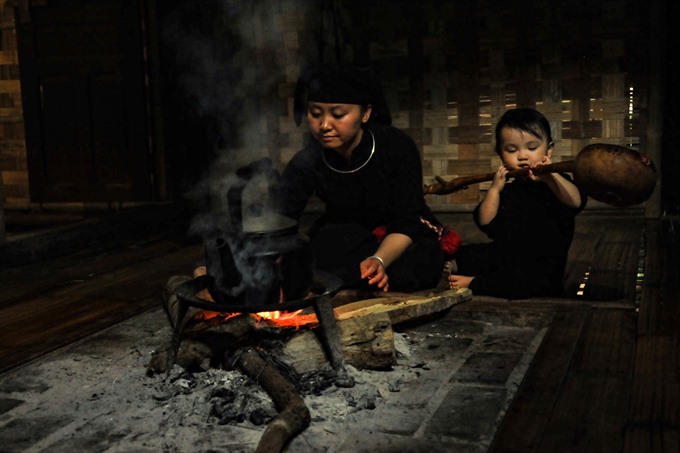 |
| Family warmth: A mother and her child by a fire inside a house on stilts. |
The bamboo trees decorated with red banana flowers that give off a sweet fragrance of herbs lead you straight to the village that’s bathed in a vibrant green colour.
Once here, you couldn’t imagine in your wildest dreams the hustle and bustle of Thai Nguyen City is just a short drive away.
After more than 11 years in its construction, the village is now an ecological site spread over 70ha with lakes packed with 20 different varieties of fish.
According to Ly Thi Chieu, of Tay ethnic group, deputy director of the tourism village, this has been the first private tourism area of the province to be recognised as a local tourism site.
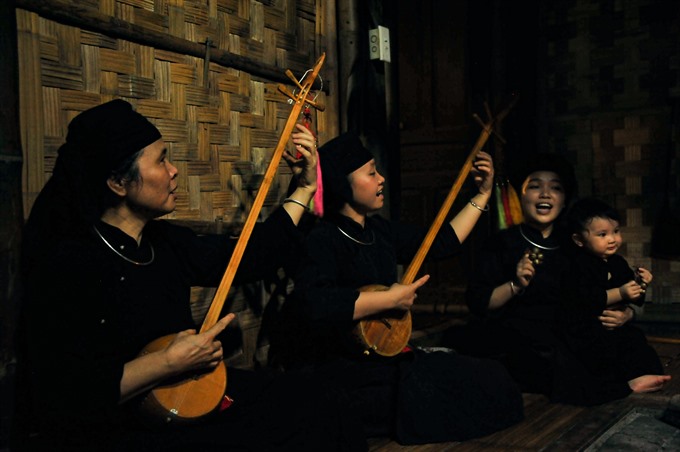 |
| On song: Villagers entertain tourists with folk music. |
She said already thousands of domestic and foreign tourists have enjoyed its beauty.
And who better to guide people around? The residents of course who know this place better than most.
In 2003, Nguyen Thi Thanh Hai, who was of Tay ethnic group born in Dinh Hoa District, dreamt of preserving her the stilt homes fearing her group’s traditions would be lost.
At that time, many Tay families replaced their stilt homes, opting for brick built buildings instead.
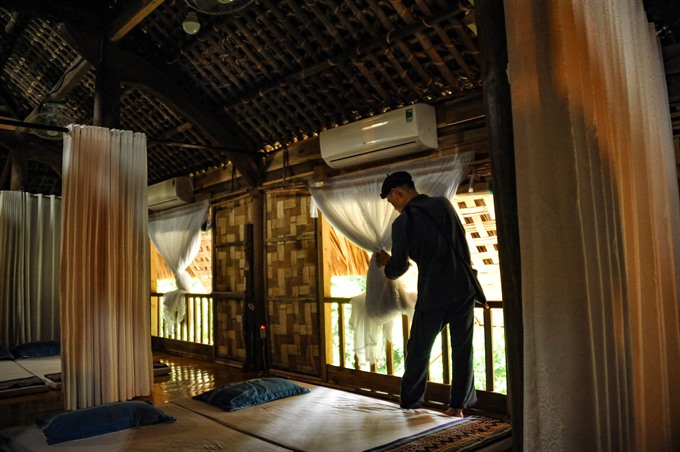 |
| On hand: Inside a house in stilts has everything tourists need. VNS Photos Nguyen Minh Hieu |
But it wasn’t just the wooden structures she wanted to keep, it was also the souls and memories the houses have collected over the past 50 years.
Visiting the site, tourists will not only have a chance to see how the people live, but also how they eat.
On offer is a wide range of traditional food made by residents from local ingredients like baked buffalo meat, roasted pig, salad from banana flower, snail stirred in fat with bamboo shoot or strange food from worms, insects, lizards.
This really is the full ethnic experience as those who visit can also join in picking tea leaves, making houses from bamboo and catching fish.
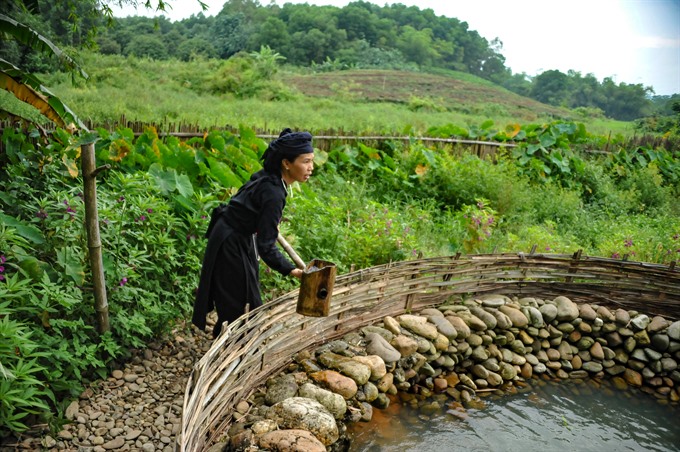 |
| Water blessing: A woman take some water the from village’s well. Tourists should wash their face, necks and hands with the holy water to get blessed. |
And for the musical among you, why not learn the art of folk singing and playing ethnic instruments.
Chieu said the village has now improved into a multi-functioned ecological tourism site, which can host up to 2,000 visitors at any time and 500 staying the night.
The village can host events at a separate functional service space of 300-2,000sq.m.
“The village offers very good homestay service,” said tourist Mai Van Vinh from Ha Noi, “They keep everything clean and tidy here from bedsheets, wooden floors, corridors and village’s roads.”
“It’s interesting that when waking up, I see a cool green space outside the bamboo wall, the sweet fragrance of herbs and the sound of roosters crowing,” he said.
Chieu added: “Our only secret for the food here is cleanliness and freshness.
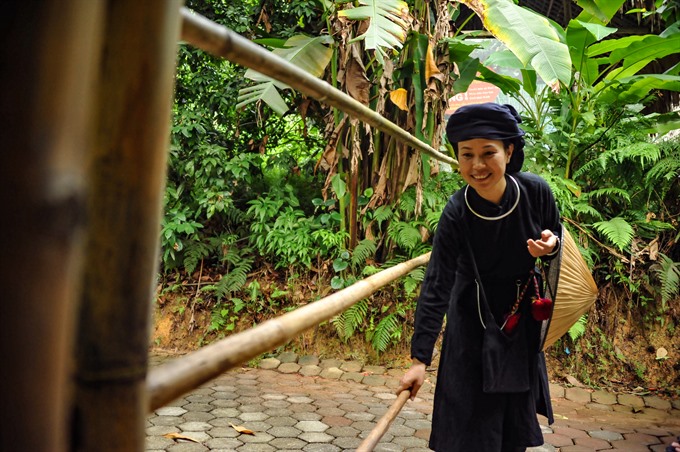 |
| Welcome: Bamboo bars serve as the village’s "gate". VNS Photos Nguyen Minh Hieu |
“Every activity inside the village is self-provided in a sustainable way so as not to harm the environment. Residents plant vegetables, rise rice, keep cattle, make clean water, plant tea and cook rice wine.”
The residents also keep their traditional cultures in the most natural way. Celebrating their own festivals while entertaining visitors at the same time.
“The village is beautiful and well-organised,” said Xenia Kojtentaki from Greece, “The people here are friendly and have good tourism skills. The food is super good.”
Kang Halim from South Korea went one step further with her praise, loving the place that much she said she is ready to give up everything and live here forever. — VNS